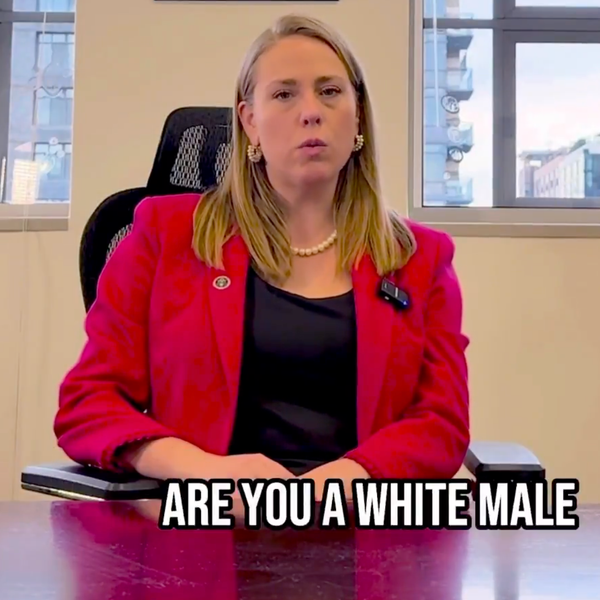For Teachers, Red States Resemble Underdeveloped Countries

2018 may very well go down in history as the year in which public-school teachers in Republican-controlled states finally became fed up and rebelled. So far this year, statewide teachers strikes have taken place in Oklahoma and West Virginia. Teachers have been protesting in Kentucky as well, and a statewide walkout is being considered in Arizona.
When Oklahoma’s teachers strike entered its second week on April 9, teachers in that very Republican state had a long list of grievances. The minimum starting salary for teachers in Oklahoma is only $31,600 (the lowest in the U.S., according to the Bureau of Labor Statistics), they haven’t had a raise in ten years, many teachers must take a second or third job in order to make ends meet, classrooms are overcrowded, and striking teachers have been using Facebook to post photos of everything from crumbling textbooks to broken chairs in classrooms. In fact, Laurissa Kovacs (a middle school teacher in McAlester, Oklahoma) received over $44,000 worth of donated supplies from Facebook users after posting a photo of a broken chair and explaining that she has had to bring in chairs from home because there weren’t enough usable ones in her classroom.
But despite such conditions, Oklahoma’s teachers are getting no sympathy from Republican Gov. Mary Fallin, who compared them to “a teenage kid that wants a better car.” And she is hardly alone when it comes to Republicans who undervalue public education.
In West Virginia, public school teachers were on strike for nine days in late February and early March over stagnant pay, rising health care costs and other grievances. West Virginia, like Oklahoma, has had some of the U.S.’ lowest salaries for public-school teachers, who complained that the 1% pay raise they were initially offered didn’t begin to offset the ever-rising health care costs they were facing. But the strike finally ended when Republican Gov. Jim Justice and West Virginia’s GOP-dominated state legislature reluctantly agreed to a 5% pay increase—which wouldn’t have come about had the teachers not shut down every public school in that so-called “right to work” state. And on March 9, the AFL-CIO declared, in an official statement, “The victory for teachers and public employees in West Virginia is a true testament to their activism and an important reminder of the power of working people to improve the lives of everyone.”
Feeling empowered by their counterparts in West Virginia, Kentucky’s public-school teachers have been staging sickouts and large rallies—and they have many of the same complaints, including stagnant wages, inadequate school supplies and overcrowded classrooms. Teachers have also been vehement in their opposition to GOP efforts to defund their pension system in Kentucky, which like Oklahoma, is a “right to work for less” state full of anti-union politicians. Both of Kentucky’s U.S. senators, Rand Paul and Senate Majority Leader Mitch McConnell, are hard-right Republicans—as are Gov. Matt Bevin and most of the state legislature.
In Arizona, teachers have been demanding a 20% pay increase and threatening a statewide walkout. Public education in Arizona has been seriously underfunded in recent years—first under Republican Gov. Jan Brewer, more recently under her GOP successor, Doug Ducey (who has stressed that a 20% pay hike is off the table and that he will go no higher than a 1% increase).
Justin Halleck, an elementary school teacher in Phoenix, is a perfect example of why so many Arizona teachers are fed up. In addition to his full-time teaching job (which pays about $35,500 per year before taxes), Halleck has been repairing computers and managing a shoe store on the side in order to make ends meet.
“Once I had to start going to the food bank to feed my kids,” Halleck told the Arizona Patch, “I knew it wasn’t working.”
According to a report from the National Education Association (NEA), Arizona is among the five states that have had the lowest salary gains for teachers in recent years. The other four were West Virginia, Alabama, Indiana and Oklahoma. And those states are by no means the only offenders: the NEA reported that nationwide, salaries for teachers have decreased by 3% on average in the U.S. during the last ten years when adjusted for inflation.
Other red states the NEA cited as having stagnant pay for teachers despite inflation include Mississippi, Utah, Alabama, Idaho, Kansas, Georgia, Tennessee and Texas. In contrast, the NEA noted that salaries for public school teachers have been increasing in Massachusetts, California, Vermont and New York State (all heavily Democratic). That isn’t to say that teachers are necessarily doing well in Democratic-leaning states; the NEA also reported that their salaries haven’t been keeping up with inflation in Rhode Island, Delaware and Connecticut. But overall, teachers are more likely to be treated well in blue states where they enjoy stronger union protection than in red states with so-called “right to work” laws.
Data from the Bureau of Labor Statistics for 2017 also paints a troubling picture of conditions for public school teachers and students in Republican-dominated states. According to the BLS, the five states that had the lowest salaries for public high school teachers last year were all states that President Trump won in 2016: Oklahoma (the worst of the bunch), Mississippi, South Dakota, North Carolina and West Virginia. Meanwhile, the five states with the highest salaries for high school teachers in 2017 were New York, Connecticut, New Jersey, California and—surprisingly—Alaska. The clear outlier in that data is Alaska, which the BLS cited as having the highest salaries for public high school teachers in the entire country ($82,020 median) but unlike the other four, is by no means a blue state. In 2016, President Donald Trump carried Alaska with 51.3% of the vote, while Libertarian Gary Johnson won almost 6% (which is a lot for a third-party candidate) and centrist Democrat Hillary Clinton won only 36.6%.
Texas shows how detrimental a “right to work” environment can be for teachers. Although public school teachers generally enjoy better pay in Texas than in neighboring Oklahoma, the Texas Tribune reported that in 2016, teachers’ salaries in the Lone Star State were about $6500 below the national average. And under a state law governing public employees, Texas teachers risk losing their teaching certificates and pensions if they go on strike. Texas’ pension program for retired teachers isn’t terribly generous: thanks to Republican Gov. Greg Abbott and Texas’ GOP-controlled legislature, retired teachers under 65 (who are too young to qualify for Medicare) were socked with higher health insurance premiums and deductibles beginning in January. But even so, teachers who are still working are reluctant to strike because they reason that an inadequate pension is better than no pension at all.
Betsy DeVos, secretary of education in the Trump Administration, showed her cluelessness when, in an interview with the Dallas Morning News, she implied that Oklahoma’s striking teachers are selfish individuals who are putting their own needs over the needs of their students. “I hope that adults would keep adult disagreements and disputes in a separate place and serve the students that are there to be served,” DeVos asserted.
DeVos, like so many Republicans, simply doesn’t get it: when textbooks and chairs are falling apart and teachers have to take a second or third job in order to make ends meet, it is hardly advantageous for the students. The conditions that Republicans have been promoting in public schools in Oklahoma, West Virginia, Kentucky and other red states are not those of an advanced economy, but rather, a developing country.
At a recent rally in Oklahoma, one of the striking teachers carried a sign reading, “Teaching: the foundation of our future. Children: our future. We care. Do you?” And if most Republican politicians respond truthfully, the answer would have to be a definite “no.”
Alex Henderson’s work has appeared in the L.A. Weekly, Billboard, Spin, Creem, the Pasadena Weekly and many other publications. Follow him on Twitter @alexvhenderson.








